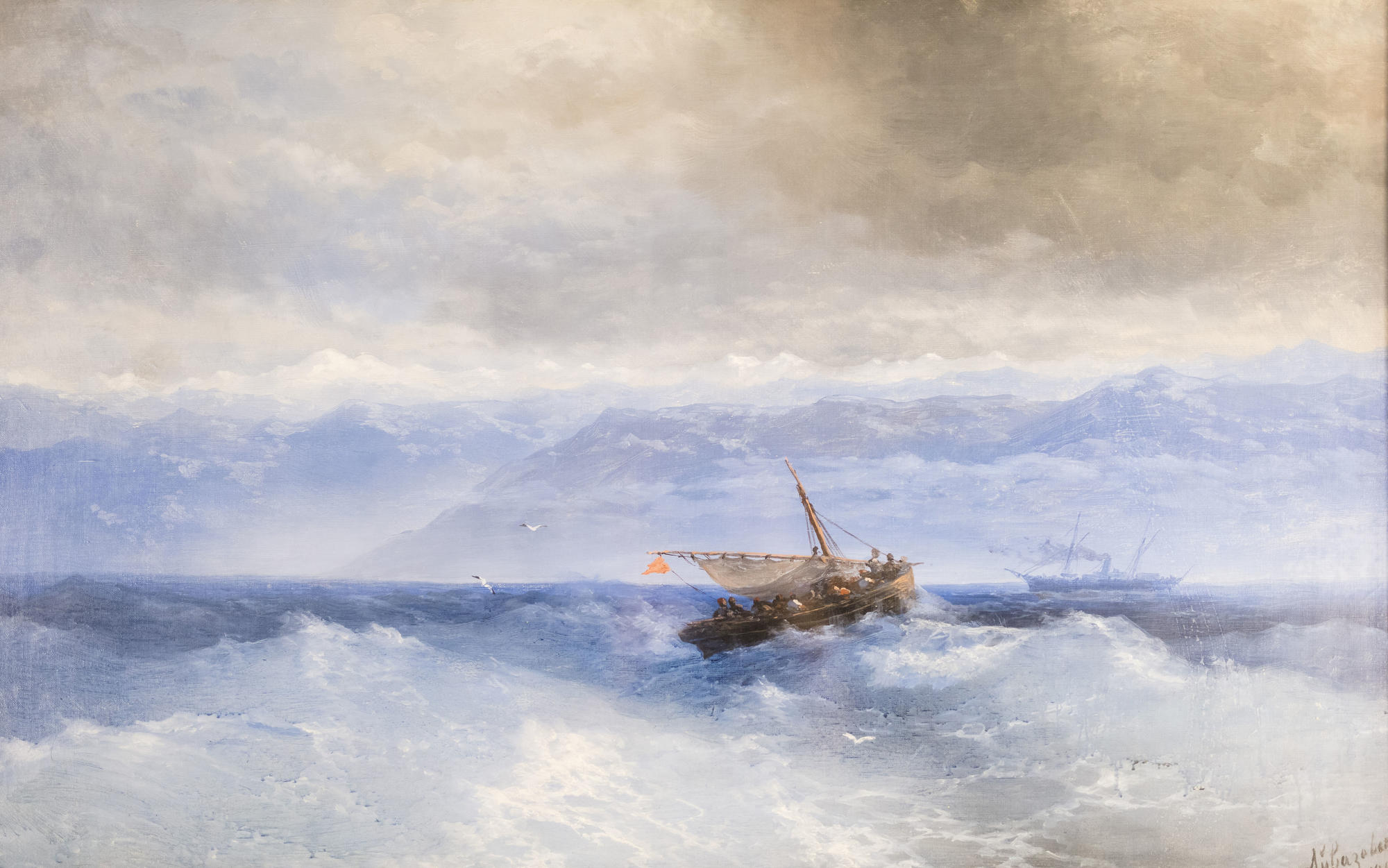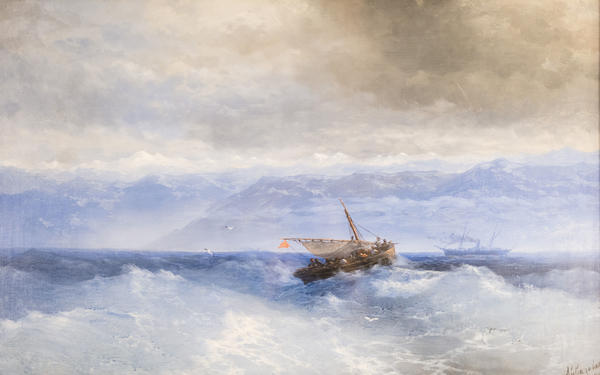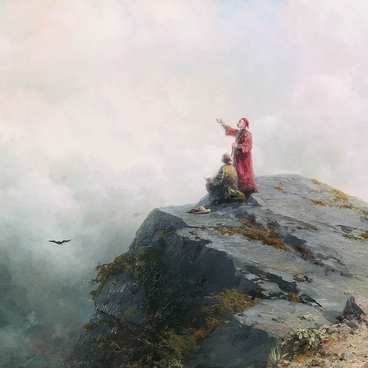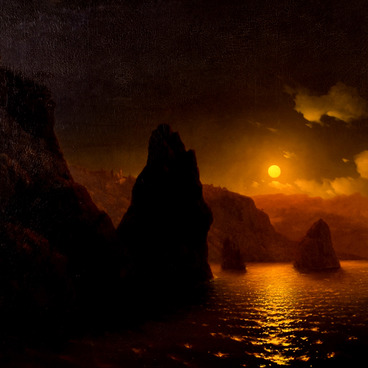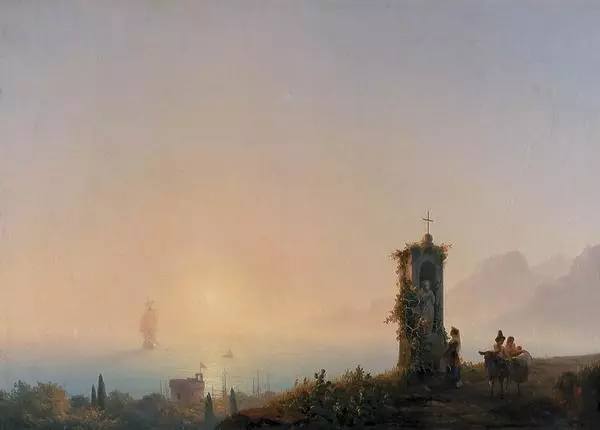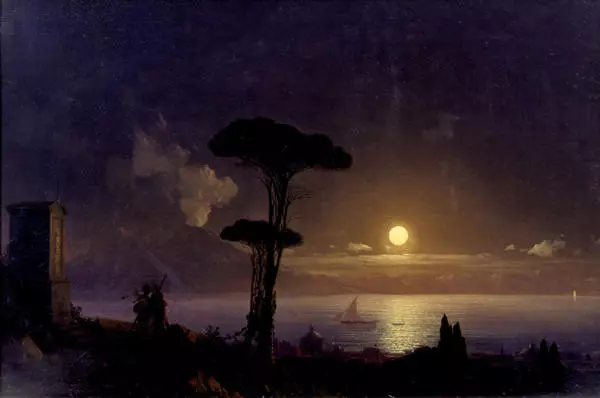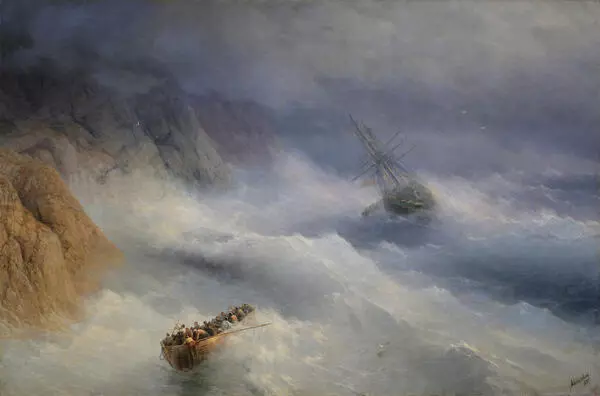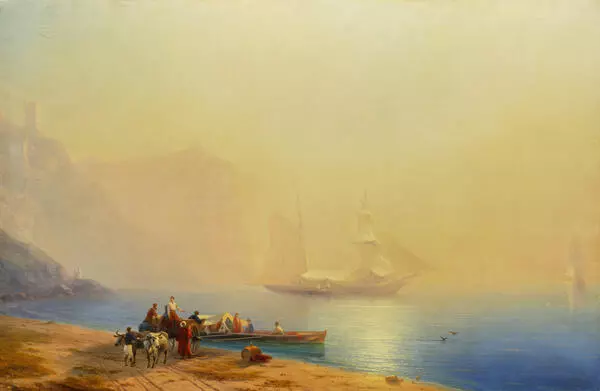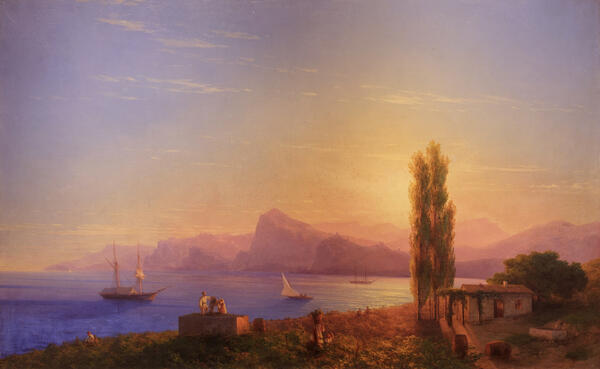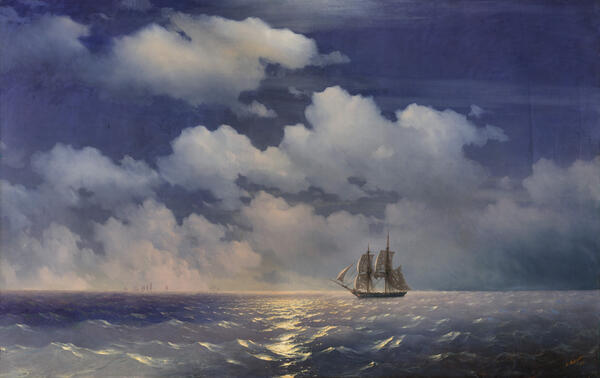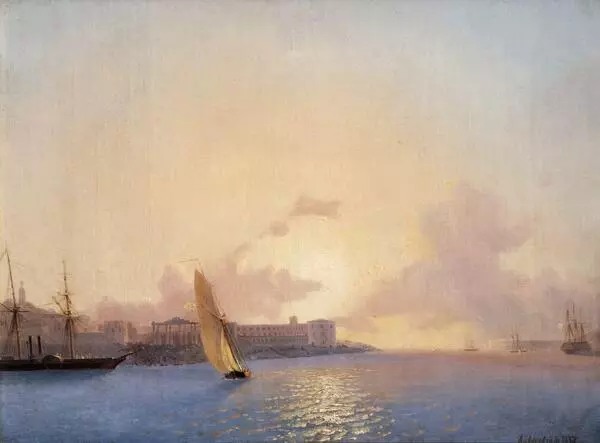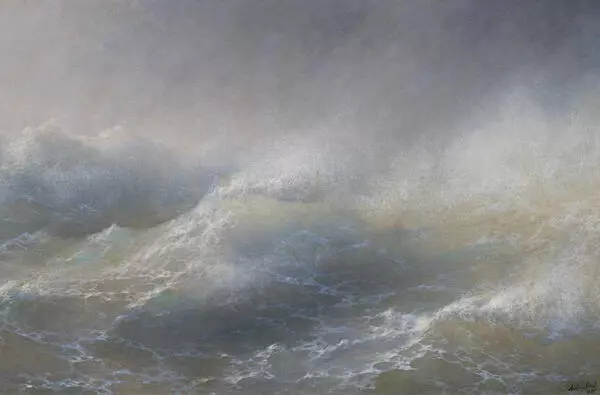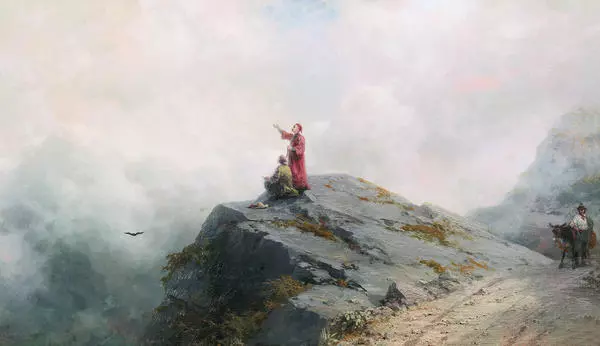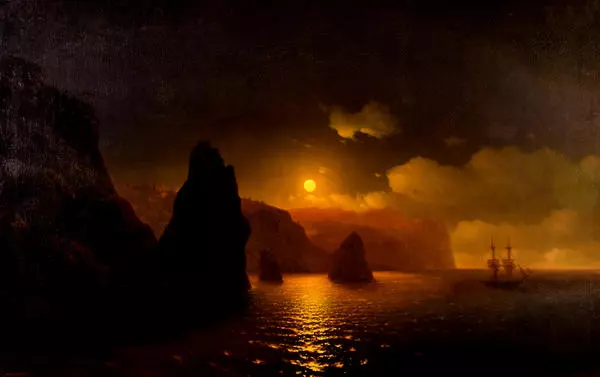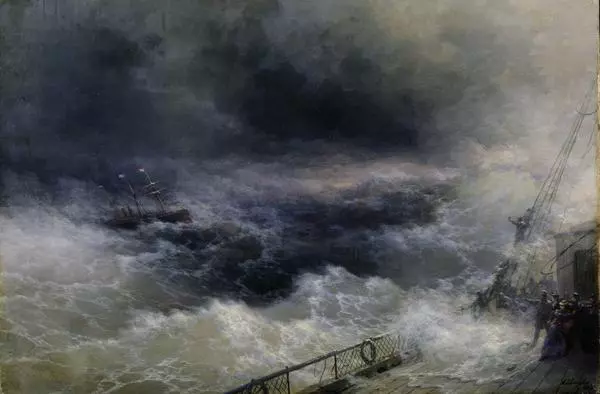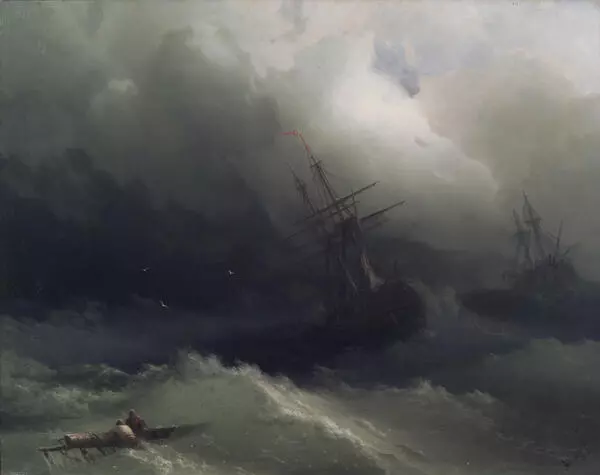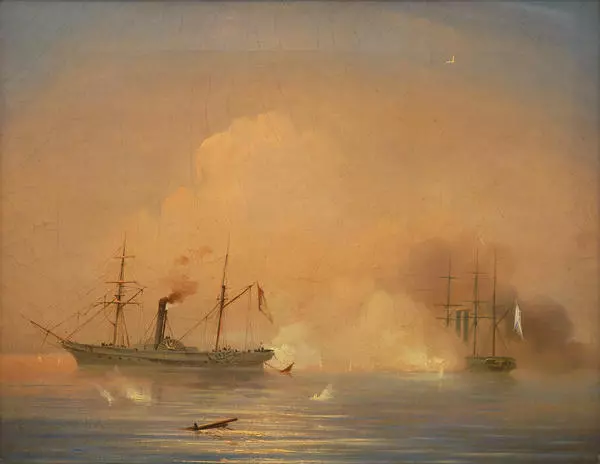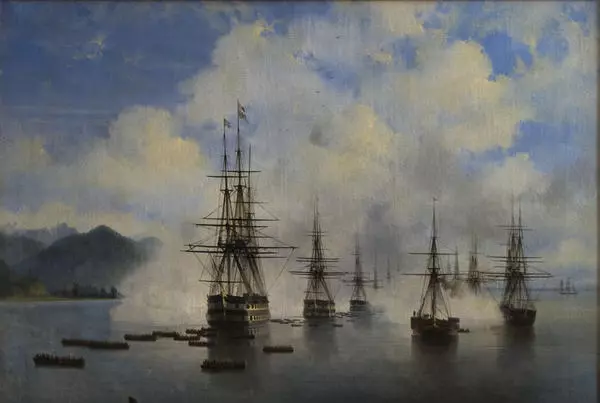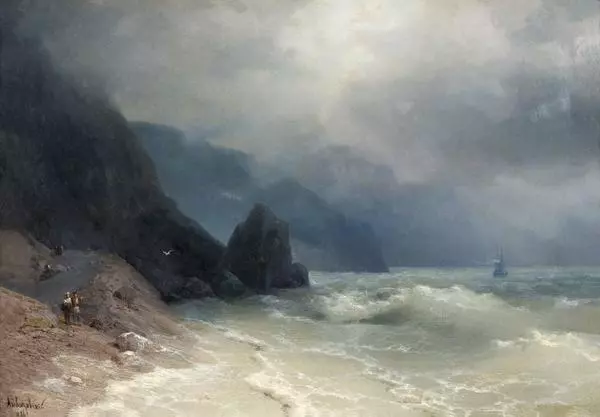Ivan Aivazovsky more than once epitomised the theme of the Caucasus in his paintings. He first saw the sea coast near the Caucasus in 1839, when he was asked to take part in a landing operation in that region. From that trip, the young painter brought a few compositions from which Aivazovsky’s fondness of battle paintings began. During his expedition he came to know many outstanding Russian naval commanders who supported the painter and sought to provide him with everything needed for his fruitful work. Back then Aivazovsky was fascinated by the grandeur of nature in the Caucasus. He collected material for many of his pictures which he then painted during his life.
The painter made his next trip to the Caucasus and its Southern part in 1868. He managed to visit Ossetia, Dagestan, Georgia and Armenia and create a multitude of remarkable mountain landscapes, which are distinguished by live perception of nature and attention to the area around. Aivazovsky was especially interested in the story of imam Shamil’s defeat, when Russian soldiers hardly managed to capture him in 1859. Local nature excited the painter’s imagination with its austerity and primevalness. The I.K. Aivazovsky Feodosia Art Gallery displays an album of small and cursory pencil drawings, which the painter made during his travel.
Back home Aivazovsky spent a lot of time working with the images inspired by his trip to the Caucasus — he was enchanted by unassailable mountain peaks, deep gorges, turbulent rivers and, of course, the sea. A small picture Caucasus Mountains from the Sea depicts a landscape berhymed by great Russian poets. Dormant snow peaks seem to blend with clouds and sea waves. The picture is painted in deep grey tones gradually blurring into a tender blue. First of all, attention is drawn to transparent and weightless waves painted with remarkable mastery. Aivazovsky sought to praise the power and grandeur of nature in the Caucasus by joining a sea scape with a mountain view. Upon spending a winder in Tiflis, the artist wrote: “I am deeply moved by the hospitality of the glorious city of Tiflis and all the signs of cordiality and esteem that I see hear all the time”.
The painter made his next trip to the Caucasus and its Southern part in 1868. He managed to visit Ossetia, Dagestan, Georgia and Armenia and create a multitude of remarkable mountain landscapes, which are distinguished by live perception of nature and attention to the area around. Aivazovsky was especially interested in the story of imam Shamil’s defeat, when Russian soldiers hardly managed to capture him in 1859. Local nature excited the painter’s imagination with its austerity and primevalness. The I.K. Aivazovsky Feodosia Art Gallery displays an album of small and cursory pencil drawings, which the painter made during his travel.
Back home Aivazovsky spent a lot of time working with the images inspired by his trip to the Caucasus — he was enchanted by unassailable mountain peaks, deep gorges, turbulent rivers and, of course, the sea. A small picture Caucasus Mountains from the Sea depicts a landscape berhymed by great Russian poets. Dormant snow peaks seem to blend with clouds and sea waves. The picture is painted in deep grey tones gradually blurring into a tender blue. First of all, attention is drawn to transparent and weightless waves painted with remarkable mastery. Aivazovsky sought to praise the power and grandeur of nature in the Caucasus by joining a sea scape with a mountain view. Upon spending a winder in Tiflis, the artist wrote: “I am deeply moved by the hospitality of the glorious city of Tiflis and all the signs of cordiality and esteem that I see hear all the time”.
